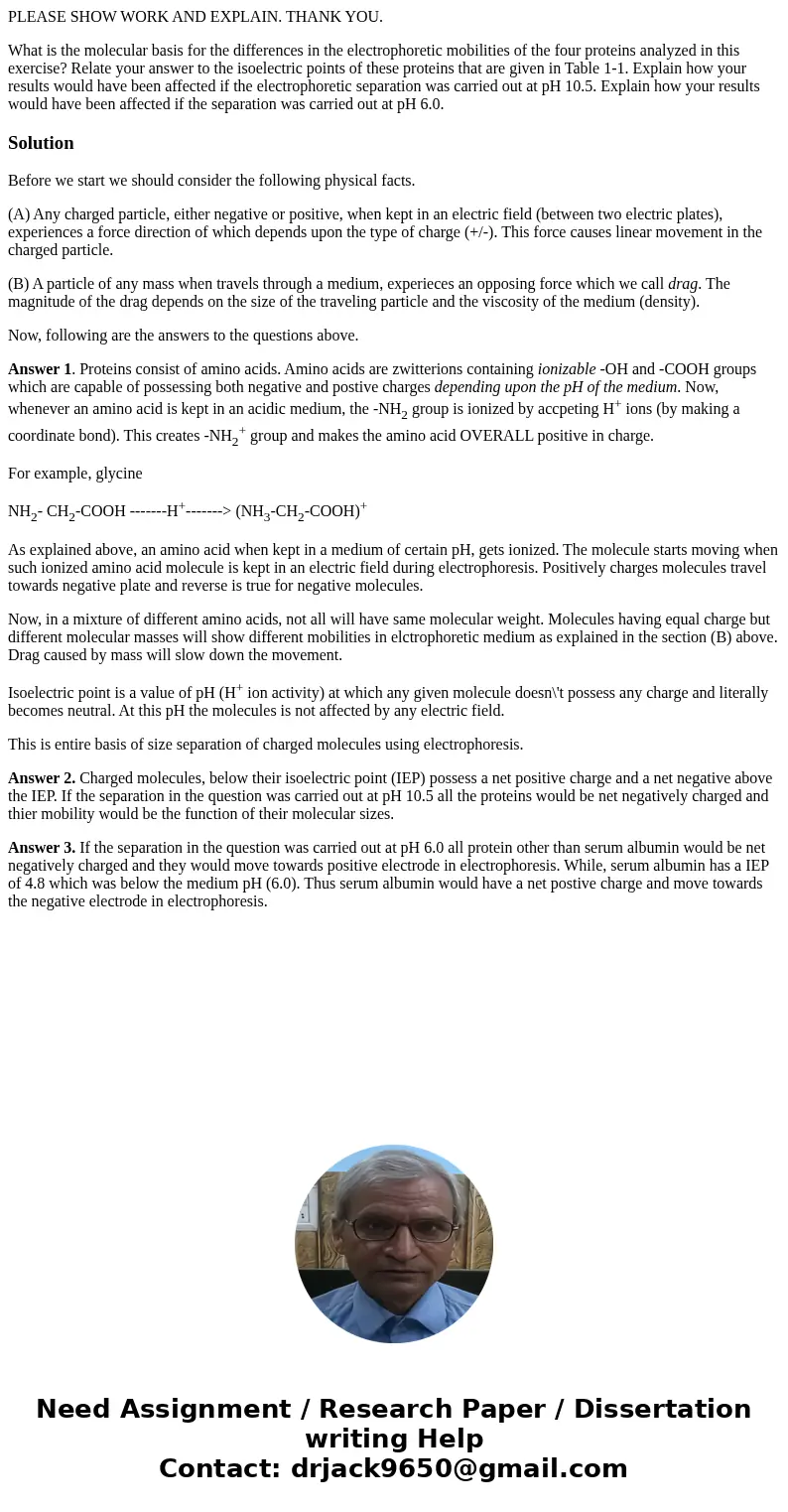PLEASE SHOW WORK AND EXPLAIN THANK YOU What is the molecular
PLEASE SHOW WORK AND EXPLAIN. THANK YOU.
What is the molecular basis for the differences in the electrophoretic mobilities of the four proteins analyzed in this exercise? Relate your answer to the isoelectric points of these proteins that are given in Table 1-1. Explain how your results would have been affected if the electrophoretic separation was carried out at pH 10.5. Explain how your results would have been affected if the separation was carried out at pH 6.0.Solution
Before we start we should consider the following physical facts.
(A) Any charged particle, either negative or positive, when kept in an electric field (between two electric plates), experiences a force direction of which depends upon the type of charge (+/-). This force causes linear movement in the charged particle.
(B) A particle of any mass when travels through a medium, experieces an opposing force which we call drag. The magnitude of the drag depends on the size of the traveling particle and the viscosity of the medium (density).
Now, following are the answers to the questions above.
Answer 1. Proteins consist of amino acids. Amino acids are zwitterions containing ionizable -OH and -COOH groups which are capable of possessing both negative and postive charges depending upon the pH of the medium. Now, whenever an amino acid is kept in an acidic medium, the -NH2 group is ionized by accpeting H+ ions (by making a coordinate bond). This creates -NH2+ group and makes the amino acid OVERALL positive in charge.
For example, glycine
NH2- CH2-COOH -------H+-------> (NH3-CH2-COOH)+
As explained above, an amino acid when kept in a medium of certain pH, gets ionized. The molecule starts moving when such ionized amino acid molecule is kept in an electric field during electrophoresis. Positively charges molecules travel towards negative plate and reverse is true for negative molecules.
Now, in a mixture of different amino acids, not all will have same molecular weight. Molecules having equal charge but different molecular masses will show different mobilities in elctrophoretic medium as explained in the section (B) above. Drag caused by mass will slow down the movement.
Isoelectric point is a value of pH (H+ ion activity) at which any given molecule doesn\'t possess any charge and literally becomes neutral. At this pH the molecules is not affected by any electric field.
This is entire basis of size separation of charged molecules using electrophoresis.
Answer 2. Charged molecules, below their isoelectric point (IEP) possess a net positive charge and a net negative above the IEP. If the separation in the question was carried out at pH 10.5 all the proteins would be net negatively charged and thier mobility would be the function of their molecular sizes.
Answer 3. If the separation in the question was carried out at pH 6.0 all protein other than serum albumin would be net negatively charged and they would move towards positive electrode in electrophoresis. While, serum albumin has a IEP of 4.8 which was below the medium pH (6.0). Thus serum albumin would have a net postive charge and move towards the negative electrode in electrophoresis.

 Homework Sourse
Homework Sourse